This travel guide covers all you need to know about Romania, one of Europe’s most diverse countries that is full of amazing cultural and natural sights.
From a visit to the capital of Bucharest to travelling around historic Transylvania, and from hiking in the Carpathian Mountains to birdwatching in the Danube Delta, there is much to see and do in Romania.
In this article, you will not only find a lot of practical information, but also detailed destination guides for the main cities and regions, trip reports, and advice on how to best reach Romania and get around the country.
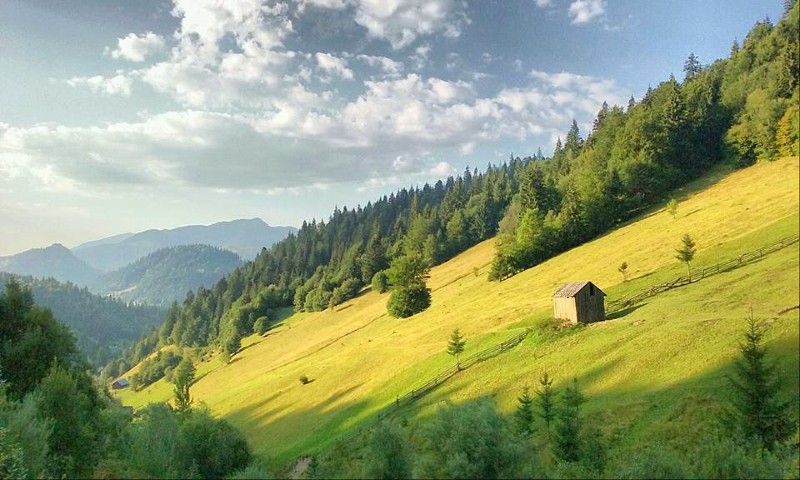
Travel to Romania: The essentials
Romania is a country in south-eastern Europe and a member state of the European Union (EU), with Bucharest being its capital city.
Since December 2024, Romania has also been part of the European Schengen area.
However, passport checks are still in place at the country’s land borders, although they have been removed at airports for flights arriving from or departing to other Schengen countries.
Romania shares its borders with Bulgaria to the south, Serbia to the southwest, Hungary to the northwest, Ukraine to the north and southeast, and Moldova to the northeast.
On its eastern side, Romania has a 245-kilometre-long (152-mile) coastline along the Black Sea, which is also where the delta of the mighty Danube River is located.
Romania’s geography is dominated by the Carpathian Mountains, which sweep across the country from the north to the southwest in a scythe-like shape.
The main language spoken in Romania is Romanian, a Latin language, although there is a significant Hungarian-speaking minority in Transylvania.
In the main cities and at major tourist destinations, English is widely spoken, especially among younger Romanians, but it becomes more rare as you move into more rural areas.
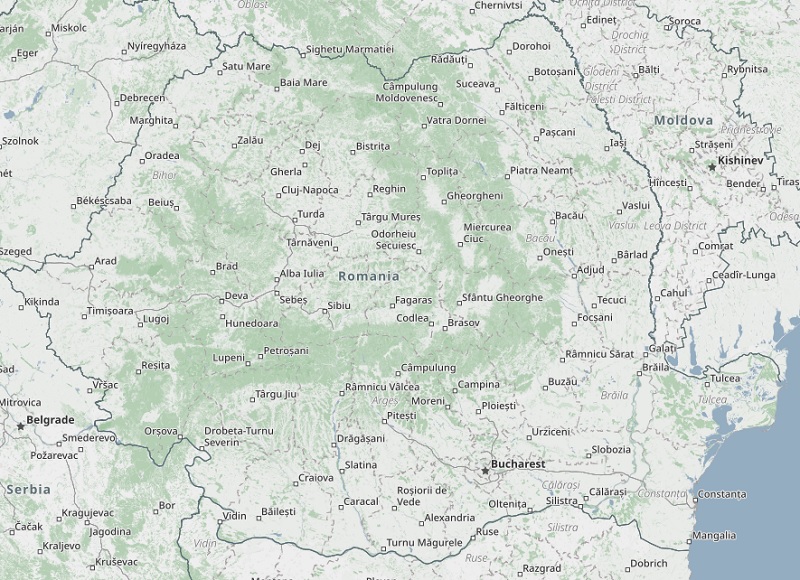
Different regions of Romania
Romania consists of 41 counties (called județ, plural județe), along with the municipality of Bucharest, which holds a unique administrative status.
From a traveller’s perspective, it is best to view Romania through its historic regions, which truly define the country both culturally and geographically.
Wallachia is the region of Romania located south of the Carpathian Mountains, and it is characterised by the flat grasslands and agricultural fields of the Wallachian Plain.
The region of Wallachia can be further divided into the historic areas of Muntenia, centred around the capital of Bucharest, and Oltenia, centred around Craiova.
In the heart of Romania lies the historic region of Transylvania, known as Ardeal to Romanians, Erdély to Hungarians, and Siebenbürgen to the German-speaking Transylvanian Saxons, all of whom call this multi-ethnic region home.
Transylvania is known for its medieval cities and towns such as Brașov and Sibiu, fortified churches, and castles, while its geography is characterised by rolling hills, mountains, high plateaus, and dense forests.
In the west of Romania, bordering Serbia and Hungary, lie the Banat and Crișana, two historic regions that, by some definitions, are also considered part of Transylvania.
The Banat, centred around the city of Timișoara, and Crișana, centred around Oradea, consist partly of plains and partly of rolling hills and low mountains.
In the northwest of Romania lies the region of Maramureș, often regarded as one of the most rural and traditional parts of the country.
Sometimes considered part of Transylvania, the region of Maramureș features forests, hills, and mountains.
In the northeast of Romania, bordering both Ukraine and Moldova, lies the region of Bukovina (written as Bucovina with a ‘c’ in Romanian), which features landscapes similar to those found in Maramureș.
This region, with Suceava as its main city, is home to the famous Painted Monasteries of Bukovina.
The eastern part of Romania is known as Moldavia (or Moldova in Romanian), a region with rolling hills that, by some definitions, also includes Bukovina.
The Romanian region of Moldavia, centred around the city of Iași, should not be confused with the independent Republic of Moldova, which lies just across the Romanian border, despite the hundreds of years of history and culture they both share.
Last but not least, the south-western part of Romania is known as Dobrudja (Dobrogea in Romanian).
This Black Sea coastal region is characterised by arid plains, hills, and lagoons, as well as the rivers, canals, and marshes of the Danube Delta, one of Europe’s largest wetlands.
In the Dobrudja region, you can also find the country’s main port of Constanța, as well as several beach resort towns, including popular and brash Mamaia, and Vama Veche, known for its fun-loving, alternative vibe.
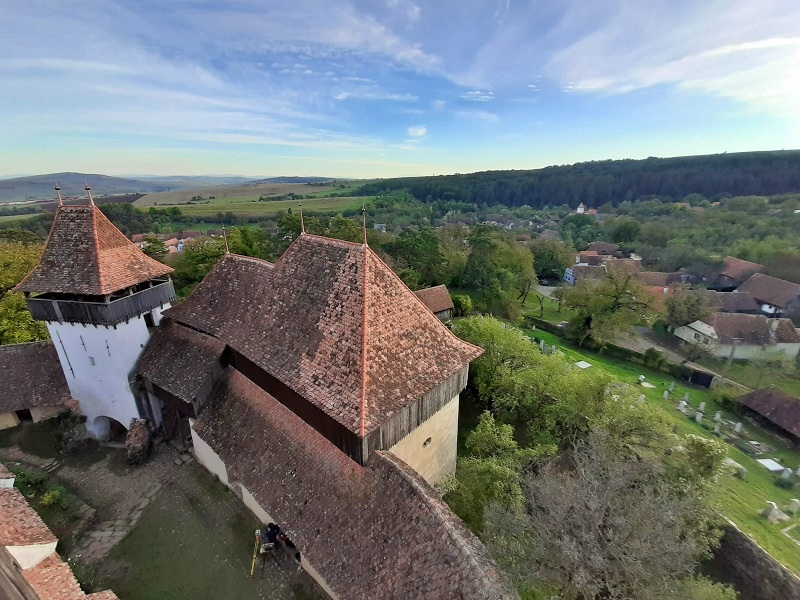
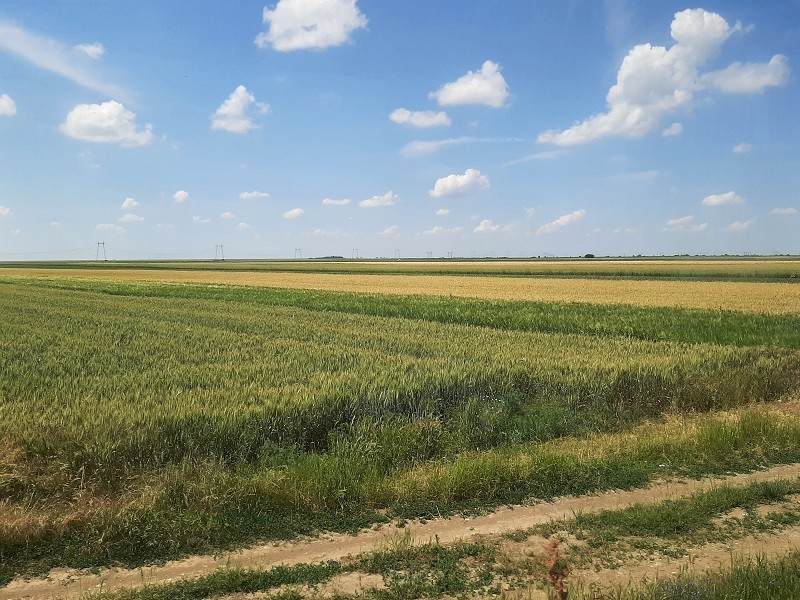

The main sights of Romania
Romania not only has many great cultural sights but is also full of natural beauty.
Whether you take a city trip to one of Romania’s beautiful and bustling cities or immerse yourself in the stunning nature of the Carpathians or Danube Delta, there are dozens of potential destinations across the country waiting to be explored.
The great thing about travelling through Romania is that it remains relatively undiscovered compared to other European countries.
This means you can enjoy nearly all of Romania’s sights in relative peace and quietness, without having to brave the tourist mob.
The following travel destinations are typically regarded as the main sights in Romania:
– Bucharest, Romania’s capital with great museums and a bustling nightlife.
– The medieval cities and towns of Transylvania, such as Brașov, Sibiu, and Sighișoara.
– The Saxon Fortified Churches of Transylvania, such as those in Biertan, Viscri, and Hărman.
– Bran Castle, the reputed home of Dracula.
– Peleș Castle in Sinaia, one of the main resort towns in the Carpathian Mountains.
– The Transfăgărășan Highway across the Carpathians, one of the best driving roads in the world.
– The Painted Monasteries of Bukovina.
– Traditional Maramureș with its wooden churches and Merry Cemetery.
– The Danube Delta, one of Europe’s largest wetlands and a prime birdwatching territory.
– The hip and happening university cities of Cluj-Napoca, Iași, and Timișoara.
– Oradea and its fine Art Nouveau architecture.
– Awe-inspiring underground salt mines, such as those in Turda and Slănic.
– Romania’s Black Sea coast and beach resorts centred around Constanța.
– Alba Iulia, the city of Romanian unification with an impressive Habsburg-era citadel.
– The beautiful scenery and rich heritage of Szekely Land, a pocket of Hungarian culture right in the heart of Romania.
– Hunedoara, home to Corvin Castle, one of Europe’s most impressive Gothic castles.
– The archaeological site of the old Dacian capital of Sarmizegetusa.
– The Iron Gates, an impressive gorge on the mighty Danube River, right on Romania’s border with Serbia.
Besides these main sights, there are numerous lesser-known cities, towns, villages, and natural parks in Romania that are well worth visiting.
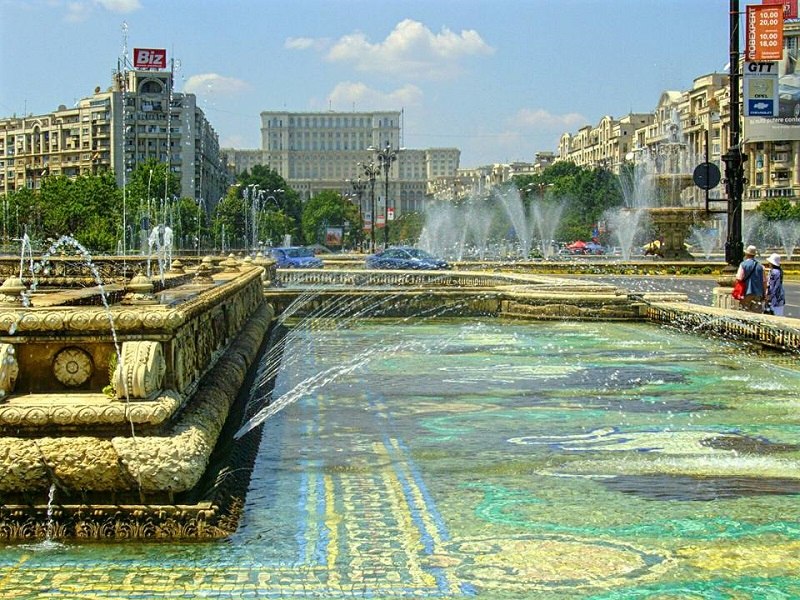
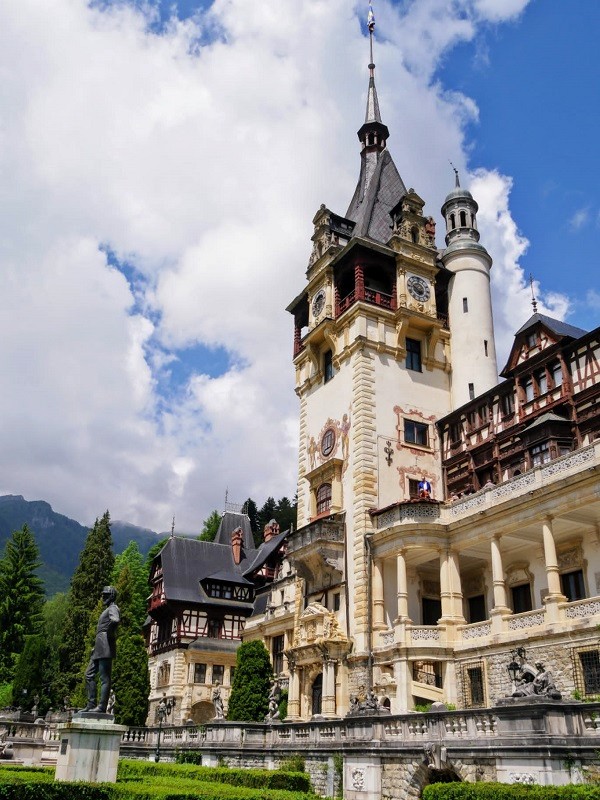

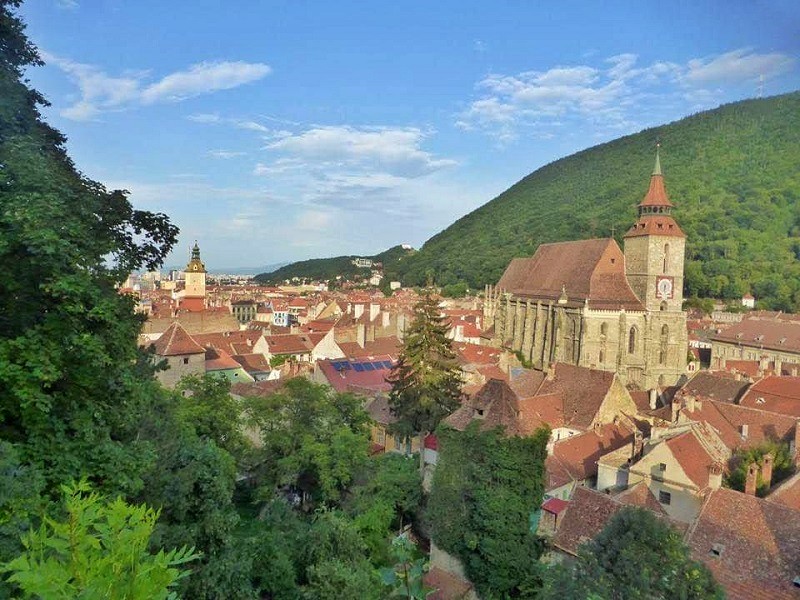
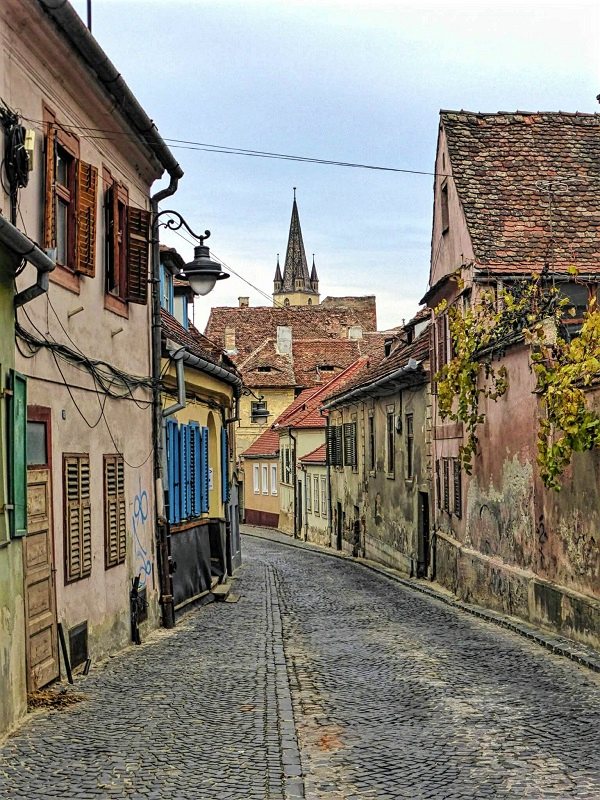



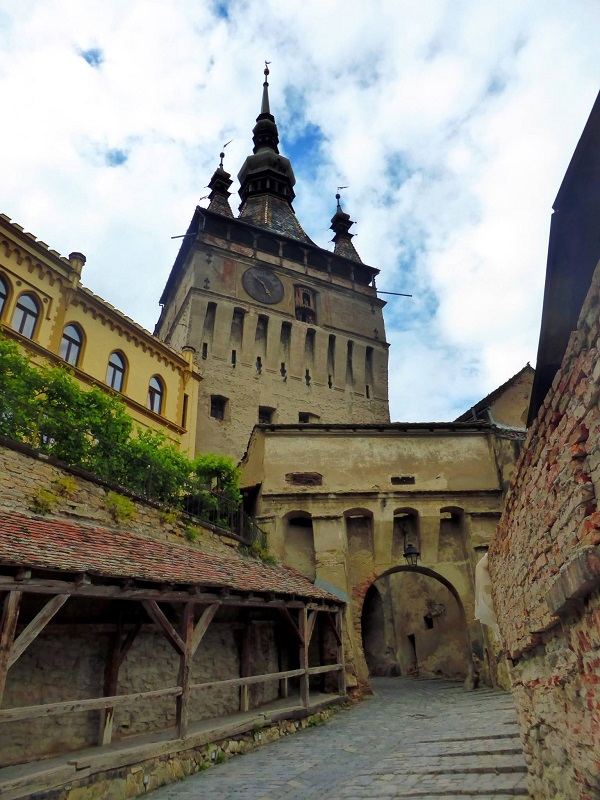
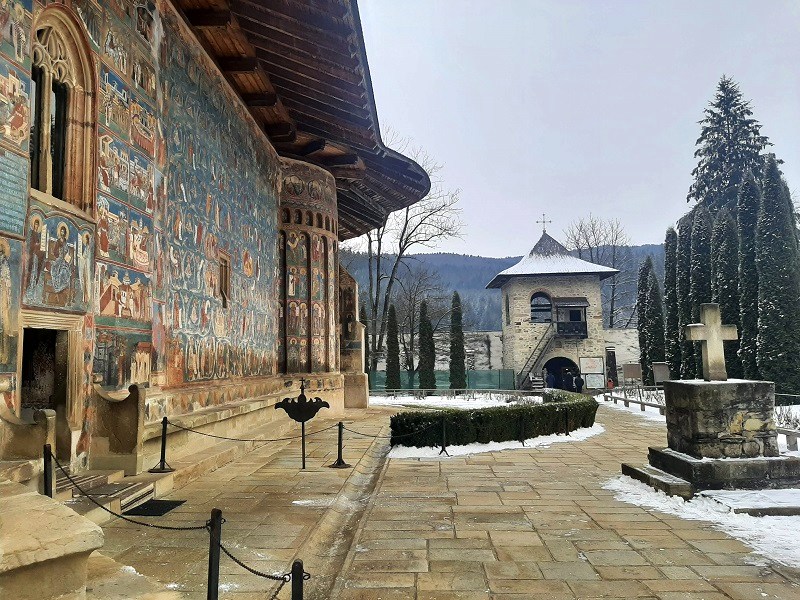
Cities in Romania
Travel safety: Is Romania safe to visit?
Romania is one of the safest European countries to visit, with crime rates generally lower than in Western or Southern Europe.
Even at night, it’s perfectly safe to walk the streets of any large Romanian city.
Of course, you should always take common precautions, such as keeping your personal belongings safe from pickpockets on public transport or in crowded places.
Dangerous street dogs, which were a safety issue in Romania during the 1990s and early 2000s, no longer pose a problem in cities.
You may still encounter stray dogs in the countryside or along main roads, and while these animals are mostly sweet and harmless, it’s best not to provoke them and to keep your distance if you’re unsure of their behaviour.
A bigger problem is the unscrupulous taxi drivers in Bucharest, some of whom may rip off tourists by taking a huge detour, tampering with the taximeter, or claiming not to have change if you try to pay with a large banknote.
In big Romanian cities, especially Bucharest, it’s best to use ride-sharing apps like Bolt and Uber rather than regular taxis.
In one of the paragraphs below about driving in Romania, the issue of road safety is addressed in more detail.
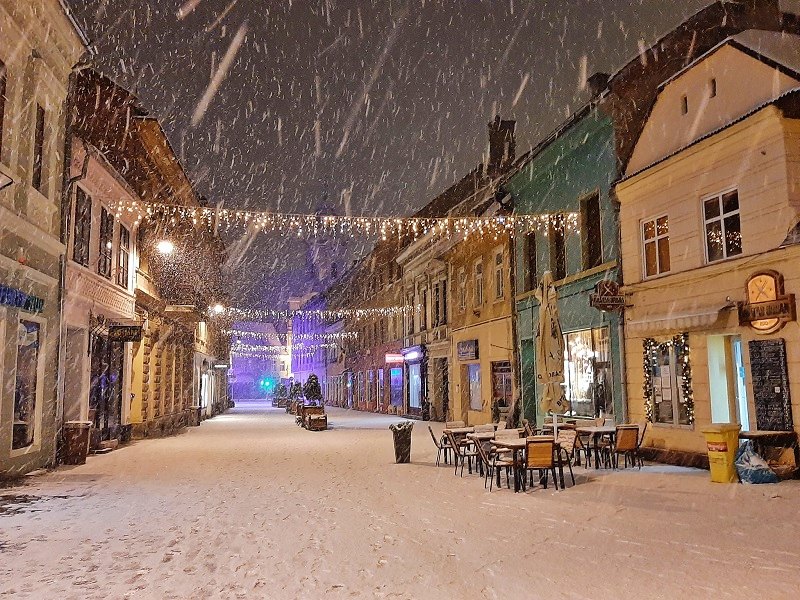
Food in Romania
When travelling to Romania, you can indulge in the delights of hearty Romanian cuisine.
Romanian food is heavily influenced by some of its neighbouring states, especially Germanic and Turkish cuisine, but also by those from Hungary and the Balkan countries.
Take, for example, Romania’s beloved grilled sausages made from minced meat, called mici or mititei (which literally means ‘little ones’), as they share similarities with ćevapi found in the Balkans.
Mici are the favourite fast food in Romania and are traditionally served with bread and mustard on the side.
Ciorbă, or soup, is an essential part of a Romanian meal, with popular varieties including ciorbă de burtă (tripe soup), ciorbă de perișoare (meatball soup), and ciorbă de fasole (bean soup).
Popular dishes in Romania include sarmale (stuffed cabbage or grape leaves, typically filled with meat, though a vegetarian version with rice also exists) and mămăligă (polenta), usually served with sour cream and salty cheese.
Tochitură is a traditional Romanian stew served with mămăligă, cheese, and various types of meat, though vegetarian versions with mushrooms also exist.
For dessert, nothing beats the traditional Romanian dish called papanași, which are fried doughnuts made with soft cheese, topped with sour cream, jam, and sour cherries or other forest fruits.
There is some regional variety in Romanian cuisine, and in Transylvania, with its Hungarian and Saxon (German) minorities, it isn’t hard to find quality goulash or a good schnitzel.
On the Romanian coast, particularly in the Danube Delta, you can savour delicious fish dishes, including ciorbă de pește (fish soup) and various fish stews or grilled fish dishes.
If you are a vegetarian (let alone vegan), it may be challenging to find traditional Romanian food that suits your dietary preferences, as the cuisine is heavily meat-based.
Historically, a vegetarian or vegan diet was common only during Lent, and it is still during this time that many traditional Romanian restaurants offer an increased selection of vegetarian options as part of a meniu de post, a special Lent or fasting menu.
However, in large Romanian cities, you will have no trouble finding vegetarian or vegan food options, as restaurants offering cuisines from around the world are readily available.
In smaller Romanian towns, the only foreign cuisine options you might find are Italian food or pizza restaurants, which are widely popular in the country, partly due to the large Romanian diaspora living in Italy.
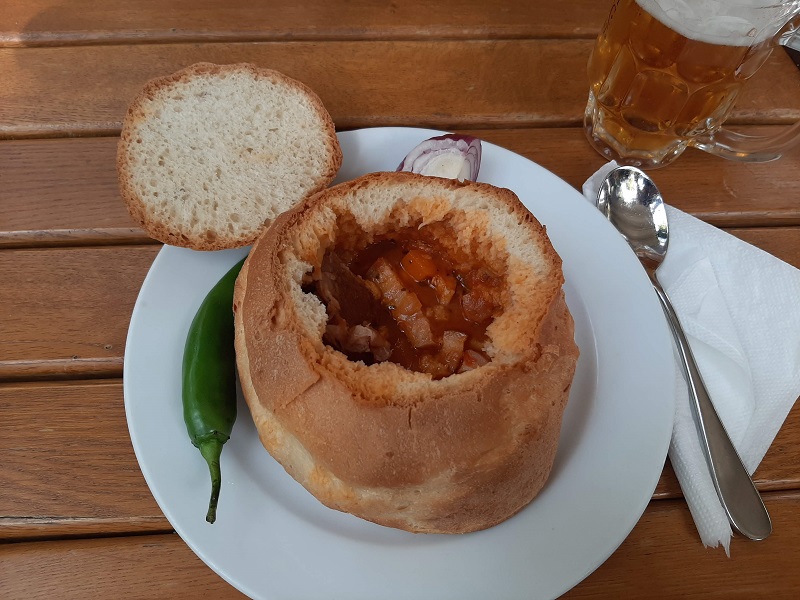
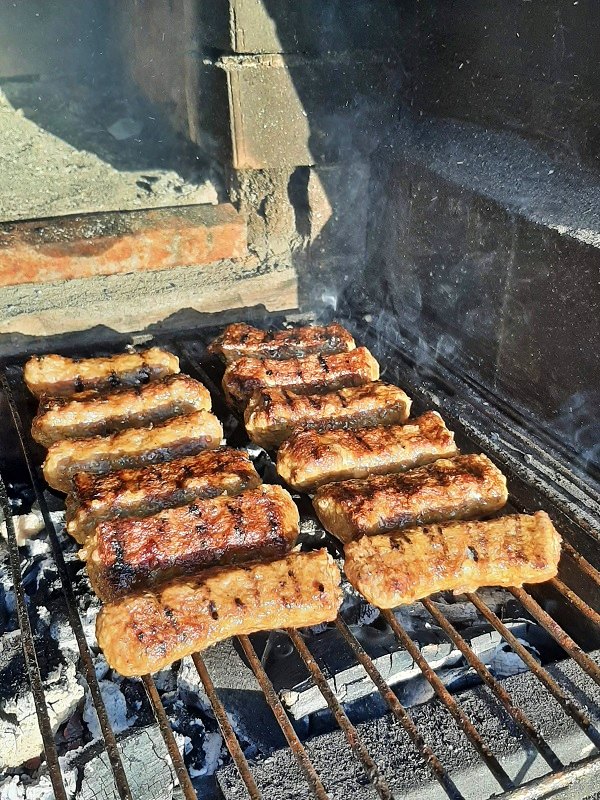


Romanian drinks
Romania is a major wine-producing country, so it’s no surprise that you can find quality wines to accompany your food when dining out.
There are a few interesting Romanian grape varieties to try, such as Fetească Albă and Fetească Neagră, which are respectively white and red wine grapes.
However, you will also find that Romanian wineries produce excellent wines from well-known international grape varieties, with Romanian Riesling, Merlot, and Pinot Noir being especially worth a try.
Beer is ubiquitous in Romania, with Ursus, Timișoreana, and Ciuc being the three main brands in the country.
If you visit the part of Transylvania predominantly inhabited by Romania’s Hungarian minority, be sure to try their local beer brand called Csíki Sör.
Romanian craft beer is still relatively small compared to other European countries, although brewers such as Hop Hooligans (based in Jilava, just south of Bucharest), Bereta (from Timișoara), and Hophead (from Cluj) can compete with Europe’s best.
Romania’s national drink is called țuică (or palinka, as it is known in Transylvania), a plum brandy with an alcohol content of at least 40%.
A popular Romanian liqueur is vișinată, which is made from sour cherries.
With the exception of official public events and New Year’s Eve, drinking alcohol in public places is illegal in Romania.
If you don’t drink alcohol, you can look forward to refreshing homemade lemonades, quality mineral water, and a burgeoning coffee culture in Romania’s larger cities.
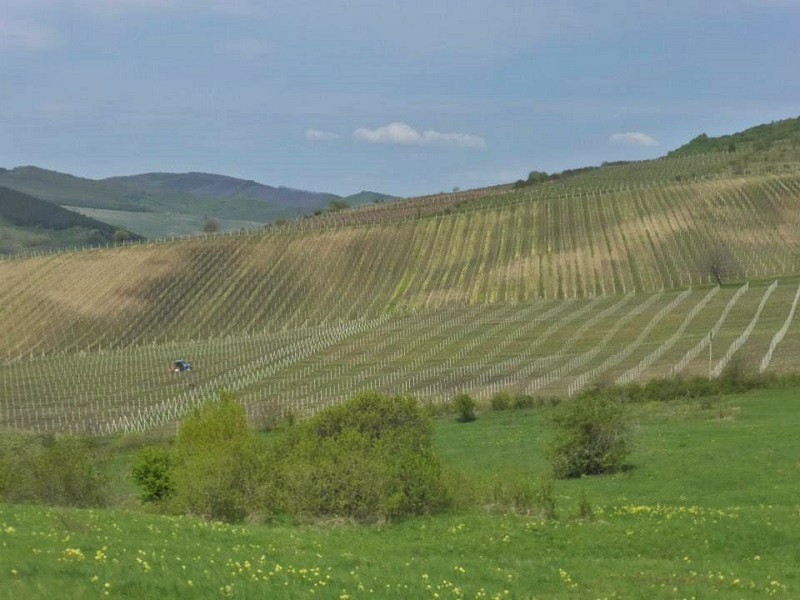
Currency and payments in Romania
The local currency in Romania is the Romanian leu (plural: lei), and its currency code is RON.
Travel costs in Romania
Although travel in Romania is certainly affordable compared to Western European standards, it is no longer the bargain it once was due to inflation and a rapidly growing economy.
Sadly, there are still many online newspaper stories published falsely claiming how cheap Romania is, often written by people who have never visited the country and are likely relying on years-old articles, citing price levels from well over a decade ago.
When staying in major cities like Bucharest, Cluj, or Brașov, some prices levels are already on par with those in Southern European countries such as Spain or Greece.
That said, prices are certainly much lower in rural regions of Romania, where you might spend half of what you would pay for food and accommodation in Bucharest.
These are the average price levels in Romania for common travel costs:
Hostel bed: Between €10 and €20.
Mid-range hotel: From €40 in small towns to €70 in big cities.
Coffee in a café: Around €2 to €3.
0.5 litre of beer in a bar: Around €2.5 to €3, or around €5 to €6 for craft beer.
Main course at a restaurant: Between €6 and €14.
Museum visit: From €1 for a small town museum, up to €30 for a full tour of Peleș Castle.
150-kilometre-long train ride: €12 for a second class ticket.
Car rent: €25 to 30 for a Dacia Logan for a day.
Petrol: €1.38 for a litre of E10 fuel (Euro 95).

Climate of Romania
Romania has a continental climate, characterised by dry, hot summers and cold winters.
However, there is some variation in climate between Romania’s regions, with the southern regions such as Wallachia, Dobrudja, and the Banat being much drier and warmer than Moldavia and Transylvania.
In the Carpathian Mountains, the weather is notably colder than in the rest of the country, with precipitation — rain in the summer and snow in the winter — being much more frequent.
In summer, temperatures in Romania can easily reach over 30 degrees Celsius (86°F), with temperatures of 40 degrees Celsius (104°F) not being uncommon in Wallachia, Dobrudja, or the Banat.
In winter, temperatures in Romania can drop as low as -10 degrees Celsius (14°F) or even colder, although outside the mountains, they are more likely to hover around the freezing point.

Best time of the year to travel to Romania
Romania can be visited year-round, although summer and autumn are generally considered the best seasons to travel to the country.
Generally speaking, the shoulder season is a much better time to travel to Romania, as the country experiences generally sunny and pleasantly warm weather in spring and autumn.
Autumn in particular is a great time to visit Romania, as the country often experiences an Indian summer that can last until early November, featuring beautiful autumn foliage and blue skies.
Although spring is also a great time to travel to Romania, it is the season with the most rain after winter, and especially in April and early May there is always a chance of rain showers.
If your visit coincides with Orthodox Easter, you can enjoy the beautiful midnight masses at Romanian Orthodox churches, but be prepared for fully booked flights and trains, as well as many shops and restaurants being closed, since everyone will be celebrating the holiday with their family.
Winter is a great time to hit the slopes of the Carpathians if you enjoy winter sports or outdoor activities, and the medieval Transylvanian cities, such as Sibiu and Brașov, look particularly picturesque in the snow.
However, there is no guarantee of snowfall away from the slopes of the Carpathian Mountains, and some Romanian cities such as Bucharest can appear rather gloomy in winter.
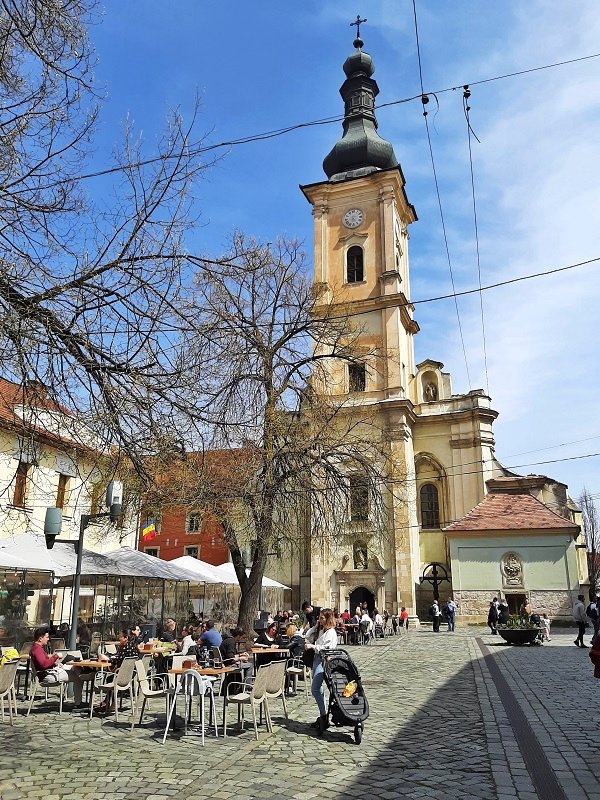

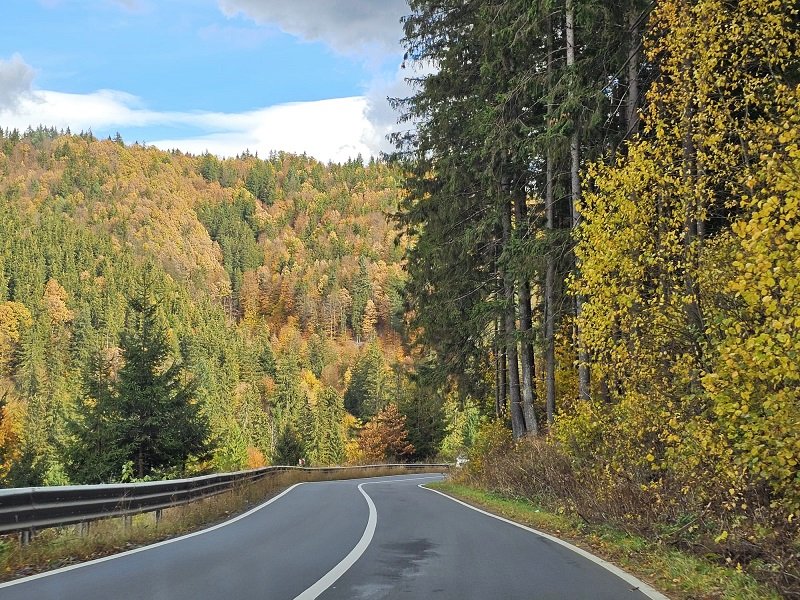
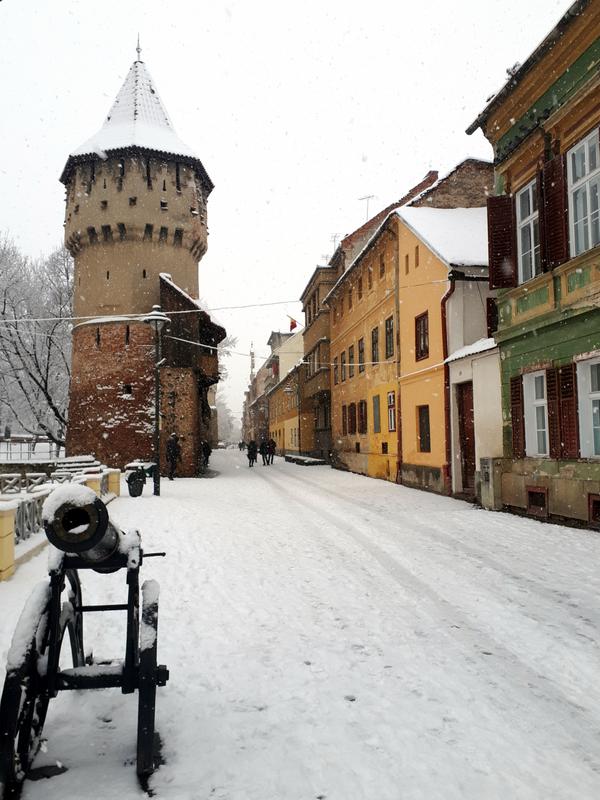
Getting to Romania
Romania is not difficult to reach, especially if you’re coming from another part of Europe.
Flight connections — especially with low-cost airlines — are great, and there are good road and rail links to other countries in the region.
Below you can find more information about transport to Romania by air, bus, and train, as well as everything you need to know when you want to drive by car to the country.
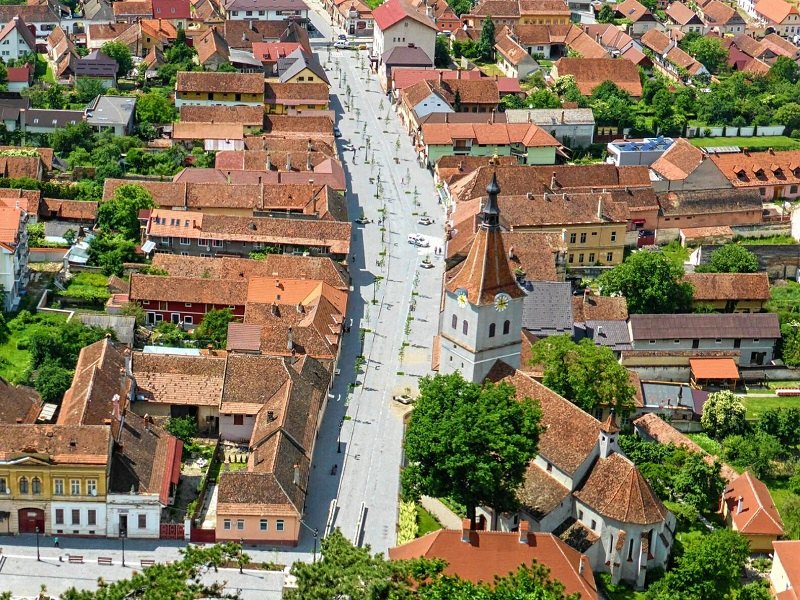
Flying to Romania
Romania is well-connected by air to numerous destinations across Europe, though direct flights from other continents are limited.
Bucharest Otopeni (IATA code: OTP) is Romania’s main airport, followed in significance by the airports in Cluj-Napoca (CLJ), Iași (IAS), and Timișoara (TSR).
TAROM, Romania’s flagship carrier, which is part of the SkyTeam alliance, operates flights from Bucharest Otopeni Airport to destinations throughout Europe, North Africa, and the Middle East.
Nearly all major European carriers, from Lufthansa to British Airways and from Air France and KLM to LOT Polish Airlines, operate multiple daily flights from their respective hubs to Romania.
However, it is actually the low-cost airline Wizz Air, which bases at several airports in Romania, that operates the most flights out of the country.
Additionally, budget carriers HiSky and Ryanair also run multiple flights each day from Romanian airports to destinations across Europe.
Although there are flights connecting Bucharest with destinations in North Africa and the Middle East, such as Cairo, Amman, and Beirut, direct flights from other continents are limited.
Currently, HiSky operates the sole intercontinental route to Romania, linking New York with Bucharest, while FlyDubai and Qatar Airways are the only other major international carriers from outside Europe that fly to Bucharest.
If you want to fly from the Americas or Asia to Romania, you are best off searching for tickets with major European airlines like Air France, Austrian, KLM, LOT Polish Airlines, Lufthansa, Swiss, or Turkish Airlines.

Travelling by train to Romania
For those who prefer overland travel, it is also entirely feasible to reach Romania by train from other European countries.
There are direct trains — daytime, night trains, or both — linking Romania with Hungary, Austria, Bulgaria, Moldova, and Turkey.
Sadly, direct rail links between Romania and Ukraine and Serbia are currently suspended.
For more details about international train travel to and from Romania, read our comprehensive Romania train guide.
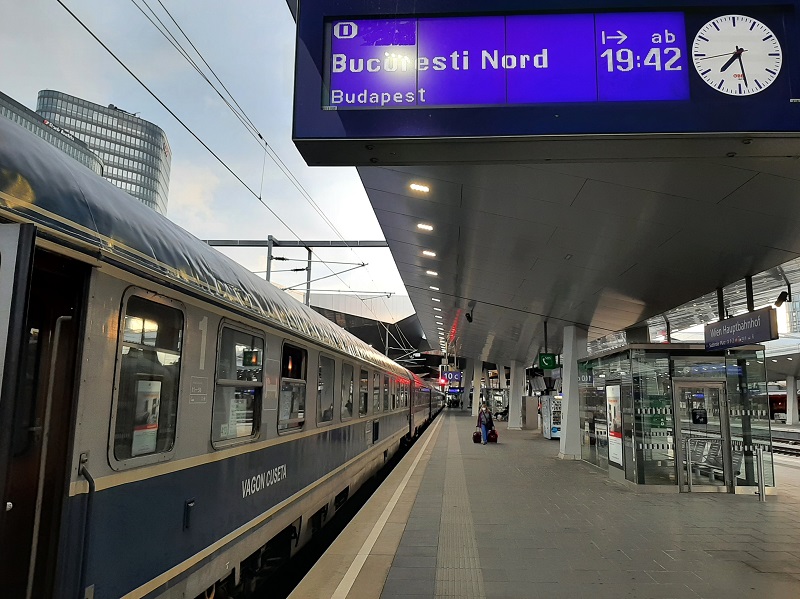
Travelling by bus to Romania
There are bus connections from cities across Romania to nearly every corner of Europe, although journey times can be long and comfort is often lacking.
Travelling by sea to Romania
There is a ferry link across the Black Sea between the Romanian port of Constanța and Poti in Georgia.
This Romania-Georgia ferry is operated by E60 shipping, and is mainly intended for freight traffic and travellers taking their van, car or motorbike, who are given priority over foot passengers.
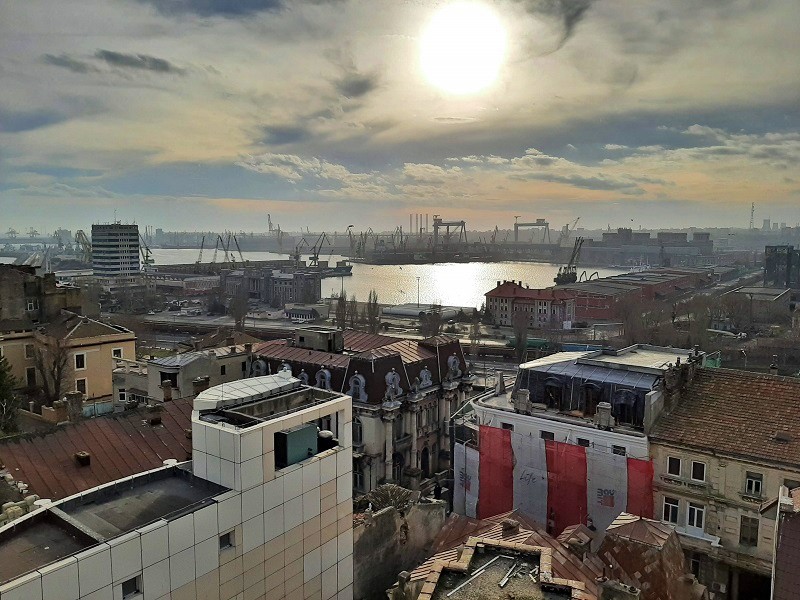
Getting around Romania
As Romania is a large country, travel times can be long when travelling from one destination to another, and the fact that the road and railway infrastructure is rather poor only adds to this.
Whether you travel around Romania by public transport or by car, be aware that your average speed will be much lower than in Western or Central Europe, and delays are common.
On the plus side, the scenery in Romania is often stunning, so the beautiful views along the way can make up for the slow travel times.
Domestic flights in Romania
As travel times by road or train can be long, taking a domestic flight can be a good option for travelling across Romania if you want to save time.
Prices for domestic flights can be quite reasonable if booked in advance, with one-way fares starting at around €60.
TAROM offers the most domestic flights by far, connecting Bucharest with Baia Mare, Cluj-Napoca, Iași, Oradea, Satu Mare, Suceava, and Timișoara.
Apart from TAROM, only HiSky is currently operating some domestic flights in Romania, although Animawings and Fly Lili are also set to begin (limited) domestic services soon.
Whether these new services will last is uncertain, as other airlines that attempted domestic flights in Romania, such as Ryanair and Wizz Air, found them unprofitable and suspended these routes after a few months or years.

Bus travel in Romania
Buses are ubiquitous in Romania, and you can reach any sizable town in the country by bus.
However, buses aren’t always comfortable, and given the long road distances, they may not be the best option for long-distance travel, even though prices are generally lower than those of trains.
There are hundreds of bus companies in Romania, ranging from large operators with multiple routes across the country to small local businesses that serve only a single town.
Autogari.ro is by far the best website in Romania for checking bus connections and operators.
It also allows you to book some bus connections online, although most can only be reserved by phone or paid for on the spot.
However, information about bus connections is sometimes outdated, so it is usually better to call the bus company or check in person beforehand to confirm if a certain departure or route is still available.
Although some cities in Romania have a central bus station, the situation can often be complicated.
In smaller Romanian towns, bus stops are frequently unmarked and may simply be a spot in front of a specific building, while in Bucharest, there are multiple bus stations across the city, and some bus companies even use their own designated departure points at random street corners.
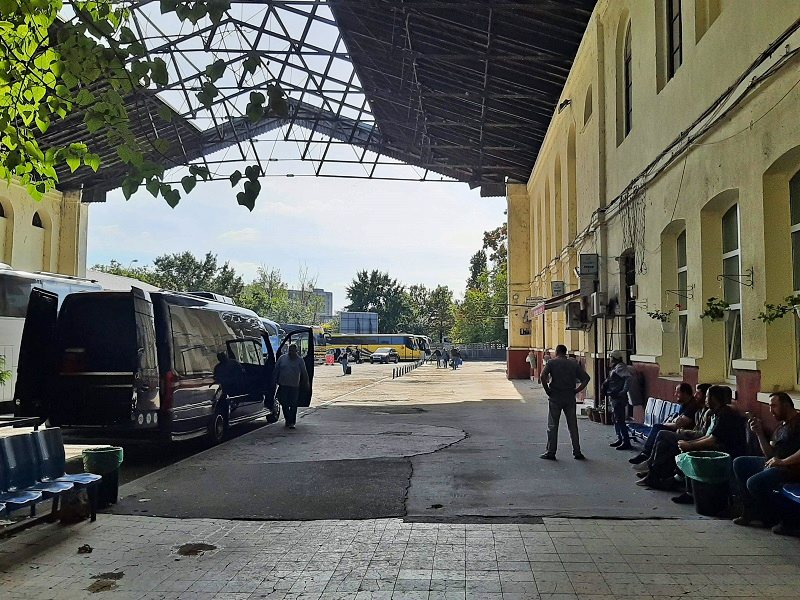
Train travel in Romania
Romania has an extensive railway network, and the train can take you to almost every city and town of size.
However, due to the ageing railway infrastructure, the average speed of Romanian trains rarely exceeds 50 kilometres per hour (31 miles per hour) outside a few main lines that are up to modern standards.
Although delays are common when travelling by train in Romania, the on-board comfort is often good, and ticket prices are affordable.
Taking a Romanian night train can be a highly convenient way to cover long distances across the country, such as when travelling from Bucharest to Cluj-Napoca or Oradea, or from Timișoara to Iași.
CFR, an abbreviation for Căile Ferate Române (Romanian Railways), is the main operator of passenger trains in the country, though several private operators also provide services.
If you want to learn more about Romanian trains and the country’s railway network, do read our Romania train travel guide.
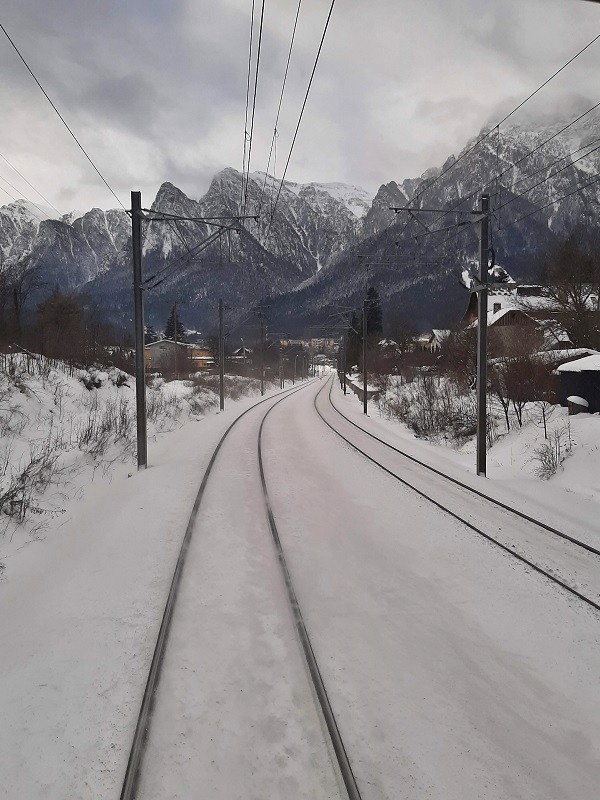
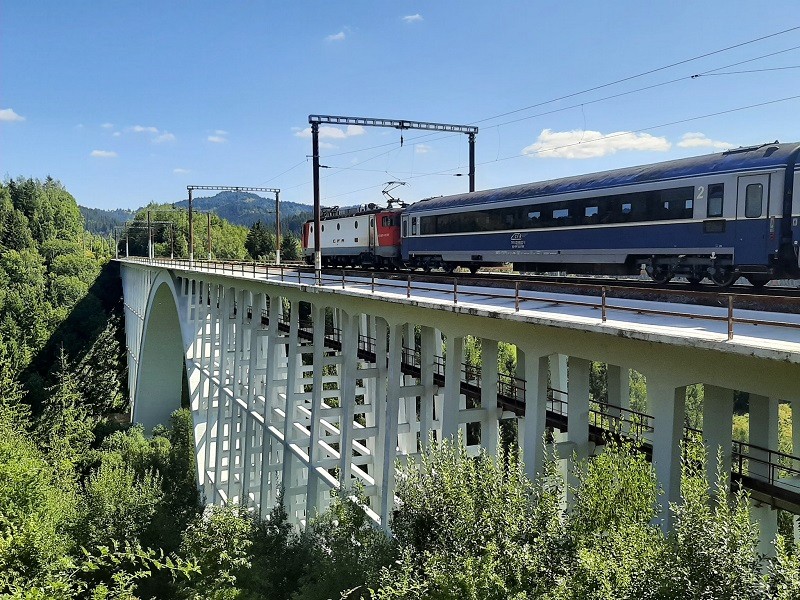


Driving in Romania
Although a car isn’t needed if you’re just visiting cities in Romania, it is essential for exploring the countryside.
Whether you drive your own car into Romania or rent one locally, many natural sights and villages cannot be reached by public transport, so you’ll need your own set of wheels.
Romania has some great driving roads, such as the famous Transfăgărășan Highway, and a road trip through the country will likely provide lasting memories.
However, the road infrastructure isn’t always good, as there are few motorways in the country and some major provincial roads have only one lane in each direction and are often congested with cars and lorries.
Moreover, in some rural areas, the road quality can be poor, and you may need to dodge potholes and stones on the road.
Combined with the often poor and dangerous driving skills of local motorists — Romania has one of the highest road mortality rates in Europe — you need to keep your eyes firmly on the road at all times and drive defensively.
Also keep in mind that finding a parking space can be difficult in some of the larger cities, and the chaotic traffic in Bucharest is not for fainthearted drivers.
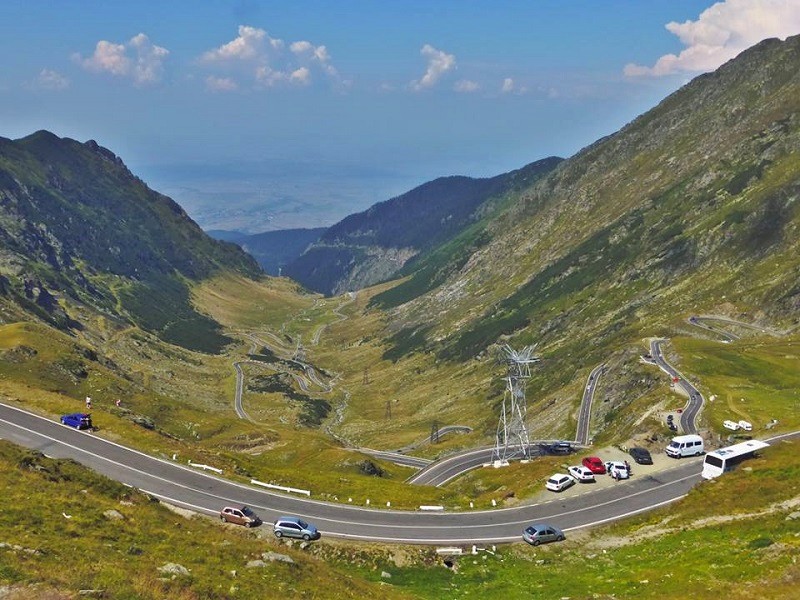
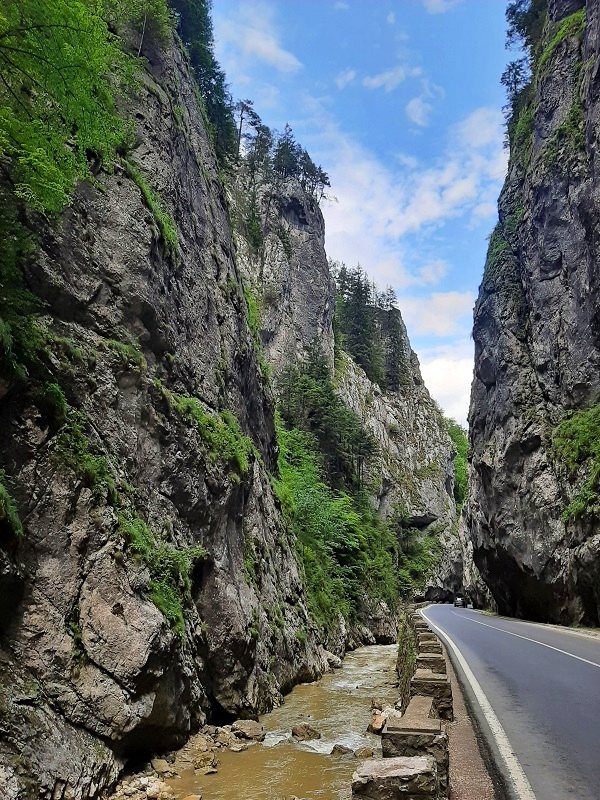
Road rules in Romania
If you want to drive your own car, minivan, lorry, campervan, or bus on the national road network of Romania, you must buy a Rovinieta, a road tax vignette.
Motorcycles are exempt from getting a Rovinieta.
You can buy the Rovinieta online, at gas stations, or at some border crossings, with vignettes available for one day, 10 days, 30 days, 60 days, or a full year.
Romanian rental cars will already have a valid Rovinieta, so you don’t need to worry about this road tax vignette when renting a car in the country.
The speed limit in Romania depends on the road category, and is 50 kilometres per hour in urban areas, 90 or 100 kilometres per hour on provincial roads, and 130 kilometres per hour on motorways, unless otherwise indicated.
It is mandatory to put on daytime running lights of your car even in daylight hours when driving on public roads in Romania.
In your car, you are legally required to carry a reflective emergency triangle, a reflective vest, a first aid kit, and a fire extinguisher.
When renting a car in Romania, these items should already be in the boot, so you don’t need to buy them, but make sure you have them if you’re bringing your own car into the country.
Do note that the drink-driving limit in Romania is zero, meaning you can’t consume even a single drop of alcohol if you plan to drive the same day.
Driving under the influence of drugs is regarded as a criminal offence.
Although there aren’t as many speed cameras and radar traps in Romania as in other European countries, the police do sometimes carry out random vehicle checks along the road.
You will often see other motorists flashing their lights to warn other drivers that a police car is monitoring traffic a short distance ahead, so adjust your speed accordingly!

Conclusion
Romania is one of the most diverse countries in Europe, and there are many amazing cultural and natural sights you can visit in this country.
From the multi-ethnic region of Transylvania with its Saxon fortified churches and charming medieval towns to the high peaks of the Carpathians and the bustling city of Bucharest, Romania has much to offer.
In this Romania travel guide, you can find everything you need to plan your trip, including an overview of all the main sights in the country, as well as practical information on transport and the best time of year to visit.
Other travel guides
If you’d like to read travel guides about other countries in Europe and around the world, click here.





